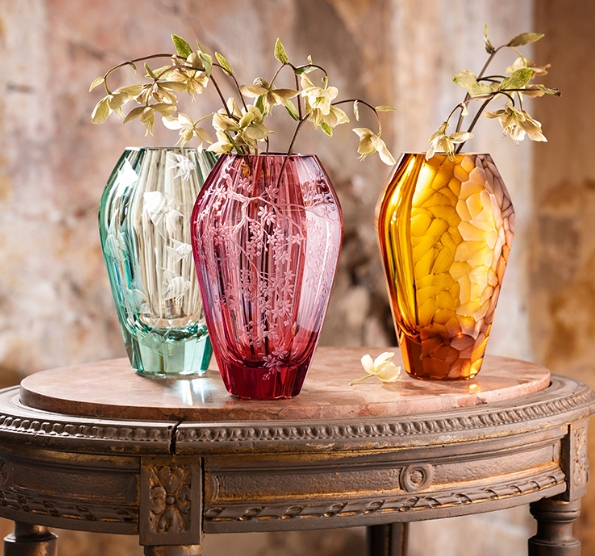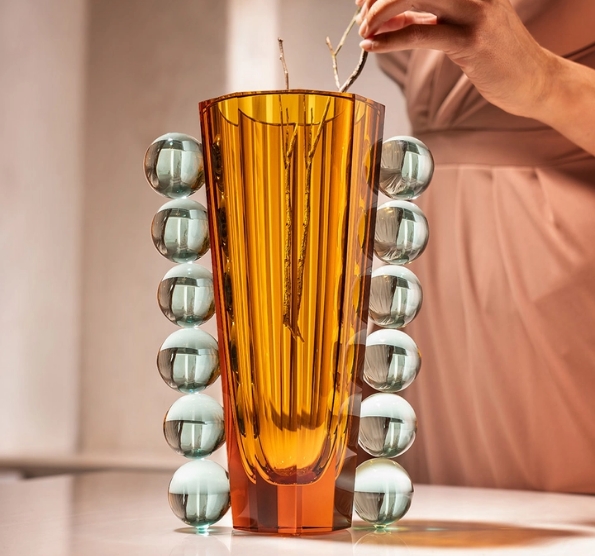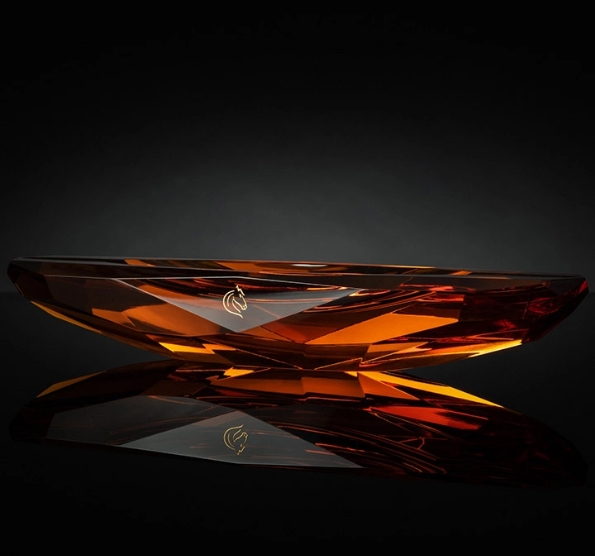
Breadcrumbs navigation
- Home page
- About Moser
- Blog
- Getting glass in shape. How does Moser form its crystal?

Getting glass in shape. How does Moser form its crystal?
Beech and pear, two deciduous trees that are inseparable from Czech nature. They are also well suited for the production of glass moulds. Why are the properties of these types of wood so ideal for glassmaking? And what other materials are moulds made of? We looked closely at the work of form makers, who lay the foundations of every crystal object.
“We are basically a carpentry serving the entire glassworks,” begins the form maker Roman Švec, who has been working at Moser for nine years. His workshop produces all wooden tools that are used to shape glass, based on the request of glassmakers. The carpenters make anything from the forming blocks aka “musclemen,” which are used to pre-form glass on the blowpipe, to chests, another indispensable tool. But most importantly: this is where all wooden moulds are lathed and carved.

It is with moulds that the path of a crystal piece begins. First, form makers carve specific shapes into a block of wood according to templates – similarly to tailors when they sew a dress. As for round or rotating shapes, form makers work on a lathe. However, more complex shapes require precise manual work. “That is when we dig into the wood, one shaving at a time,” Roman describes the process. He mentions the oval bowl Maria Theresia, one of Moser's masterpieces, as an example of a particularly demanding piece.

Wooden moulds are like consumer goods, they have a limited lifespan. Sometimes, they are used only for a few dozen products. Hot glass gradually burns the wood. The thicker the wall of the product, the faster the form disappears. “We constantly have to check whether the size still corresponds to the template, so that the final product does not deviate in anything and is not larger than desired,” adds technologist Martin Prokeš. Some templates even date back to Ludwig Moser. “To this day, we use them to carve moulds for the Splendid collection, for instance.”
A mould that has been used only a few times and is not yet completely burnt is then stored. “It dries up and deforms in the warehouse. But when the order arrives again – perhaps in ten years – we let it soak in hot water overnight, and if all goes well, it's usable again the next day,” says Roman. And what about worn moulds that can’t be used anymore? “You can use them as firewood,” jokes Roman. “Sometimes, however, I keep one as a souvenir. Like the one I made for the Polygon vase. I worked hard on that one, carving the shape millimetre by millimetre,” he recalls. This piece with a distinctive geometric shape eventually received a metal form – even this material has its advantages.

Wood for smoothness, metal for a longer lifespan
The production of one metal mould costs a hundred thousand Czech crowns, but it will last for decades. However, it is only suitable for products that are then sanded and polished. “A film of steam does not form between the metal and the glass, as in the case of moist wooden moulds, so the glass directly touches the inside of the mould. That's why the glass ends up ‘crumpled’ and the product then needs to be further processed,” explains form maker Roman. In a metal form, you simply can’t blow out a fragile glass that needs to have a completely smooth surface from the very beginning.

Pear wood, on the other hand, is ideal when you need a perfect surface. It has almost imperceptible annual rings, so they do not leave an imprint on the glass – as glassmakers say, it almost does not leave a “rim” on the glass at all. It is therefore ideal for the production of smooth thin-walled products. “Except there is little pear wood. We regularly check if someone offers it in classifieds. But that happens sporadically, so we sometimes have to do without it for a year. Instead, we use beech, which is easier to find and has comparable properties,” describes Roman. “However, we recently planted a pear orchard. One day, it will become a great source of wood for moulds. Nevertheless, my son is more likely to work with that wood, as it takes up to thirty years for the trees to reach the required size.”
Apart from using wood and metal, Moser also works with talc moulds, suitable for products such as glass stems, or pecol moulds, based on a concrete binder. That is why several types of forms may have been used for a single product. “Customers often wonder how much work, different techniques and people are behind each product. In short, the glassworks includes a whole range of different professions, it's not just about working at the glass plant,” points out technologist Martin Prokeš.
And how does one become a form maker? The high school in Nový Bor offers a specialized field. Another way is through carpentry – this is was also the career path of Roman Švec. “When I finished with carpentry, Moser was just looking for a form maker. I applied and have stayed here to this day.” Since that time, thousands of moulds have passed under his hands. “I had to learn a lot. The work in the glassworks is beautiful, but also demanding and it only partially overlaps with carpentry. I was in fact moulded by it,” he laughs.








